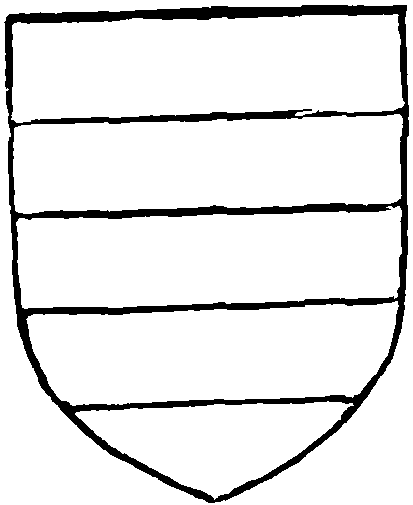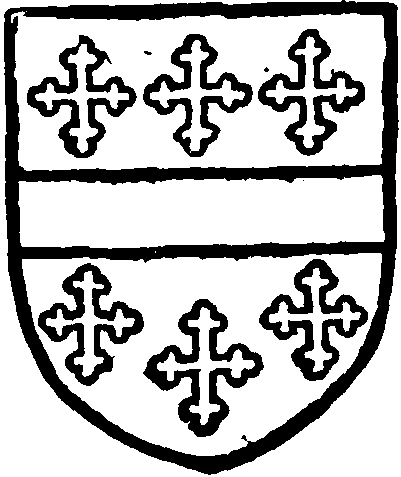A History of the County of Buckingham: Volume 3. Originally published by Victoria County History, London, 1925.
This free content was digitised by double rekeying. All rights reserved.
'Parishes: Hawridge', in A History of the County of Buckingham: Volume 3, ed. William Page (London, 1925), British History Online https://prod.british-history.ac.uk/vch/bucks/vol3/pp367-369 [accessed 23 April 2025].
'Parishes: Hawridge', in A History of the County of Buckingham: Volume 3. Edited by William Page (London, 1925), British History Online, accessed April 23, 2025, https://prod.british-history.ac.uk/vch/bucks/vol3/pp367-369.
"Parishes: Hawridge". A History of the County of Buckingham: Volume 3. Ed. William Page (London, 1925), British History Online. Web. 23 April 2025. https://prod.british-history.ac.uk/vch/bucks/vol3/pp367-369.
In this section
HAWRIDGE
Aucrug, Hauerigge (xiii cent.); Hauregge (xiv cent.); Hawryg, Harridge (xvi cent.).
Hawridge is a small parish of 696 acres, of which 442 are arable land, on which crops of wheat, oats, and barley are grown, while 133 are laid down in permanent grass and 5 consist of woods and plantations. (fn. 1) The soil is clay with a subsoil of clay and chalk, which has been worked in pits, now disused. The land lies high and has an average altitude of 588 ft. above the ordnance datum.
The village stands 3 miles north-west of Chesham station, the road to which passes through Chesham Vale. At the southern entrance to the village is St. Mary's Church, which stands back from the road close to the site of an ancient ring-work surrounding Hawridge Court, (fn. 2) the seat of Mr. W. Holzapfel. The area inclosed covers four-fifths of an acre, and is strongly fortified by a rampart 16 ft. high and a ditch, still wet on the south-west half, 4 ft. deep; there are gateways on the north, east and west, where the ditch is spanned by causeways. The farm, standing on the north, has a timber and brick barn, which probably dates from the 16th century.
About half a mile along the road in a northwesterly direction are two groups of cottages of 17thcentury date, and a little further on is a house dated 1571, which is built of heavy timbers, and has a projecting upper story and a 17th-century addition at the north-west. Botchmore Farm, on the same road, is a timber-framed house of about 1600 with 17th-century additions, and, like all the foregoing buildings, has been much altered and restored in later times.
The road continues uphill to Hawridge Common, on the edge of which are the cottages and smithy with the school and a mission hall. Another road leads south-east across the common to Vale Farm and the rectory house beyond and finally reaches Heath End, which is chiefly in Hertfordshire. In the east of the parish is Hadden's Plantation with Geary's Wood adjoining, the latter probably taking its name from the family of Jasper Geary, yeoman, who held tenements in Hawridge in the early part of the 17th century. (fn. 3) A bronze sword has been found here. (fn. 4)
MANOR
The manor of HAWRIDGE is not mentioned in the Survey of 1086, and is first referred to in the 13th century, when it was held of the honour of Wallingford, (fn. 5) to which it remained attached as late as 1507. (fn. 6) In 1560, however, it was said to be held in free socage of Sir Francis Knollys as of his manor of Wingrave. (fn. 7)
Hawridge must have been included among the possessions of which Thurstan Basset died seised c. 1223 and passed to his daughter Isabel, widow of Robert Mauduit. (fn. 8) Their son William Mauduit (fn. 9) held here in 1235, (fn. 10) and was succeeded at his death about 1257 by his son Sir William Mauduit, afterwards Earl of Warwick. (fn. 11) On his death without issue about 1268 his estates passed to his nephew and heir William Beauchamp Earl of Warwick, (fn. 12) who in 1284 occupied the position of mesne lord. (fn. 13) This intermediary lordship is last heard of in 1300, when it was held by Guy his son and heir. (fn. 14)
The John Beauchamp who was holding the manor in fee in 1284 (fn. 15) was probably the brother of the ninth Earl of Warwick. (fn. 16) He died some time after 1316 (fn. 17) and was succeeded by his son Richard, who died in 1327 leaving a son John, (fn. 18) who held Hawridge in 1346. (fn. 19) By 1379 the manor had passed to Edward or Edmund Cook, (fn. 20) who appears to have been in financial difficulties about 1384. (fn. 21) From this date all trace of the descent of this manor disappears for more than a century. Towards the beginning of the 15th century it reappears in the possession of John Penyston, who presented to the church in 1410. (fn. 22) It afterwards descended to Richard Penyston, who settled it on his wife Margaret for life, with remainder to his son and heir Thomas, Elizabeth his wife and the issue of Thomas. After the death of Richard, Margaret married Robert Bulstrode, who presented to the church in 1465 and 1478. (fn. 23) Margaret died in 1506, and was succeeded by her grandson Thomas Penyston. (fn. 24) The latter died in 1557, (fn. 25) leaving a son and heir Anthony, (fn. 26) on whose death in 1560 he was succeeded by his son, another Thomas. (fn. 27) Anthony's widow Jane married Anthony Aylesworth, in conjunction with whom she brought an action in 1563 against her son Thomas Penyston, alleging that Hawridge had been settled on her and her first husband for life and that her son had only a reversionary interest. (fn. 28) By 1565 Thomas Penyston had obtained the manor, (fn. 29) which he conveyed in 1574 to John Wolmer and John Davy (fn. 30) as a preliminary to its alienation to Thomas Tasburgh and Dorothy his wife. (fn. 31) Dorothy was the widow of Sir Thomas Packington and had acquired some notoriety by her interference in elections at Aylesbury. (fn. 32) She died in 1577, (fn. 33) and her husband Thomas Tasburgh some years later, when Hawridge passed to Thomas Tasburgh, who with his wife Jane alienated the manor in 1597 to John Tasburgh, jun., on the occasion of his marriage with Lettice daughter of Jane by a former husband. (fn. 34) John Tasburgh, sen., his father, had agreed to pay an annuity to Thomas and Jane and was sued by them for default. (fn. 35)

Mauduit. Argent two bars gules.

Beauchamp. Gules a fesse between six crosslets or.

Tasburgh of Hawridge. Argent a cheveron between three plamer's staves with their scrips sable.
In 1606 Sir John Tasburgh, kt., and Lettice his wife conveyed the manor to Thomas Dell, (fn. 36) who in 1617 quitclaimed it to John Blackwell. (fn. 37) Five years later John Blackwell, sen., and Mary his wife and John Blackwell, jun., and Julia his wife conveyed the manor to Edmund Wright. (fn. 38) The manor is said to have been sold in 1650 to John Seare, (fn. 39) who died in March, 1682–3. (fn. 40) His son Richard Seare owned Cholesbury at the beginning of the 18th century. (fn. 41) Since then the descent of Hawridge is identical with that of Cholesbury (fn. 42) (q.v.), with which it is now held by Mr. H. J. Turner, J.P., of Braziers End, Cholesbury.
CHURCH
The church of ST. MARY consists of a chancel and nave with transept, western bell turret and south porch. It was rebuilt in the 13th-century style in 1855–6, a few of the old stones being re-used. The font, which dates from the 13th century, is circular, the bowl being carved with flowers and leaves.
In the nave is a slab which now retains only the brass of a shield with the arms of Kitson impaling Donington, but there are indents for two other shields which bore the arms of Packington and Kitson and Tasburgh and Kitson. (fn. 43) The names of the families whose arms are impaled are inscribed above each shield. The brass inscription belonging to this slab is affixed to the south wall of the church, close by, and commemorates Dame Dorothy Packington, daughter of Sir Thomas Kitson and wife of Sir Thomas Packington and afterwards of Thomas Tasburgh. She died in 1577. There is also an incised floor slab to John Seare, who died in 1682, Mary his wife who died in 1685, Mary his daughter who died in 1687, and John son of Richard and Elizabeth Seare, his grandson, who died in 1699.
There are two bells, the first by John Warner & Sons, 1856, and the second recast in 1914. The original second bell was by Richard Chandler, and bore the date 1676.
The plate consists of a silver chalice and paten and a silver-mounted flagon presented to the church in 1856.
The registers begin in 1725.
ADVOWSON
The church of St. Mary, Hawridge, is first mentioned in 1227, when William Mauduit was the patron. (fn. 44) The right of presentation descended with the manor (q.v.), but was sold by John Seare in 1750 to Rachael Sandby, widow of Josiah Sandby. (fn. 45) By 1775 it had passed to George Sandby, (fn. 46) and continued in this family until 1850. (fn. 47) By 1851 it was the property of John Merry, (fn. 48) and had passed three years later to the Du Cane family, (fn. 49) in whose possession it continued for the next thirty years. (fn. 50) Between 1883 and 1887 the right of presentation passed from the Rev. Henry Du Cane to the Bishop of Oxford, who still possesses it. The living is a rectory.
There do not appear to be any endowed charities in this parish.